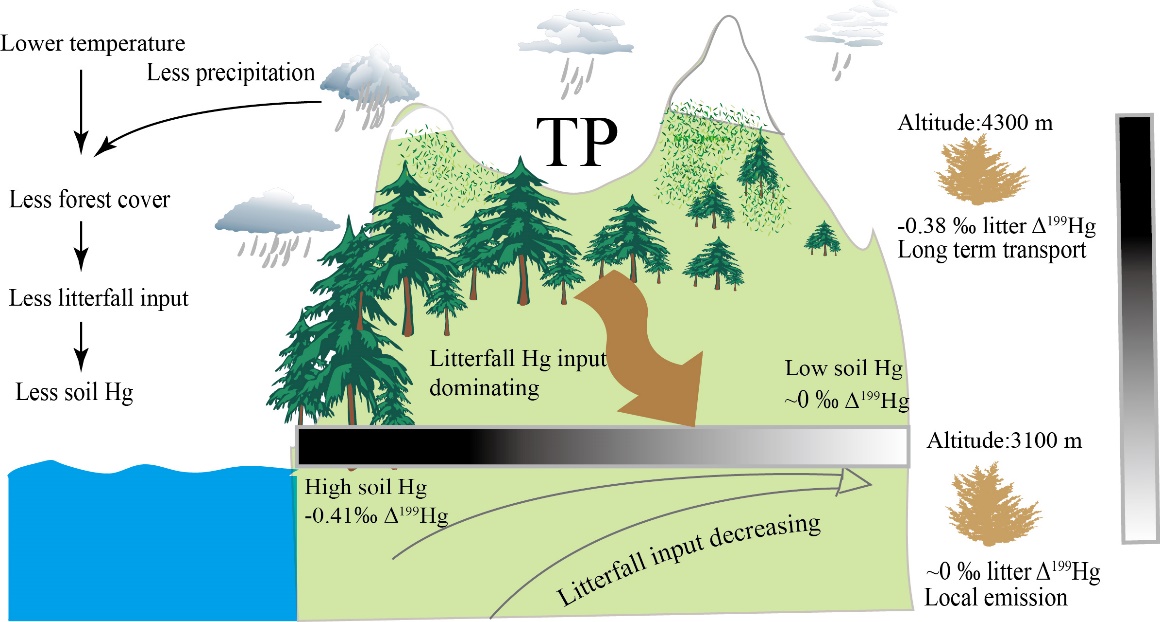Elevated atmospheric mercury (Hg) deposition to pristine ecosystems is a persisting environmental issue. Remote mountain forests represent a class of pristine ecosystems that have a landscape at an elevation of 2500 m above sea level (a.s.l.) or higher, or at an elevation of 300–2500 m with sharp changes in elevation within a short distance. Such forests account for 20% of the total global forested area. There is growing evidence for augmented atmospheric Hg deposition at high-elevation sites, and montane areas act as convergence zones for atmospheric Hg.
The Tibetan Plateau (TP), with an average elevation of >4000 m a.s.l., is the “Third Pole” on earth. The source, deposition and accumulation of Hg in the forests of the TP need to be better understood.
FENG Xinbin's group at Institute of Geochemistry, Chinese Academy of Sciences (IGCAS) investigated the isotope composition of Hg in leaf litter and in soil profiles, and aimed to identify the sources of Hg in leaf litter and the main inputs of atmospheric Hg to the TP forest floor.
The study indicates that the atmospheric Hg is influenced by the local anthropogenic emissions at low elevations (3100 to 3600 m), whereas it is impacted by the long range transport at high elevations (3700 to 4300 m).
Furthermore, the evidence of the negative Δ199Hg found in the surface soil samples shows that the Hg input from litter is more important than wet deposition to Hg accumulation on the forest floor.
The study also suggests that the precipitation and temperature have indirect effects on Hg accumulation by influencing litter biomass production in the eastern TP.
The environmental impact of this study is that the researchers propose a new mechanism that water/temperature-limited plant primary productivity shapes Hg accumulation in the montane forest floor. Such mechanism is quite different from the earlier findings. Earlier mass balance studies have highlighted that Hg deposition caused by the “cold trapping” effect is the dominant deposition pathway for Hg accumulation in surface soil in elevated montane regions. Overall, this study provides important new insights in understanding Hg accumulation in montane forested areas.
This study was funded by the National “973” Program of China (2013CB430003) and the Natural Science Foundation of China (41303014, 41471416), and was published in Environmental Science & Technology (http://pubs.acs.org/doi/abs/10.1021/acs.est.6b03806?journalCode=esthag).
|

|
|
Fig. Mercury accumulation in the montane forest Floor of the Eastern Tibetan Plateau(TP)
(Image by IGCAS) |
Contact:
FENG Xinbin
Institute of Geochemistry, Chinese Academy of Sciences
E-mail: fengxinbin@vip.gyig.ac.cn
(By Prof. FENG Xinbin's group)